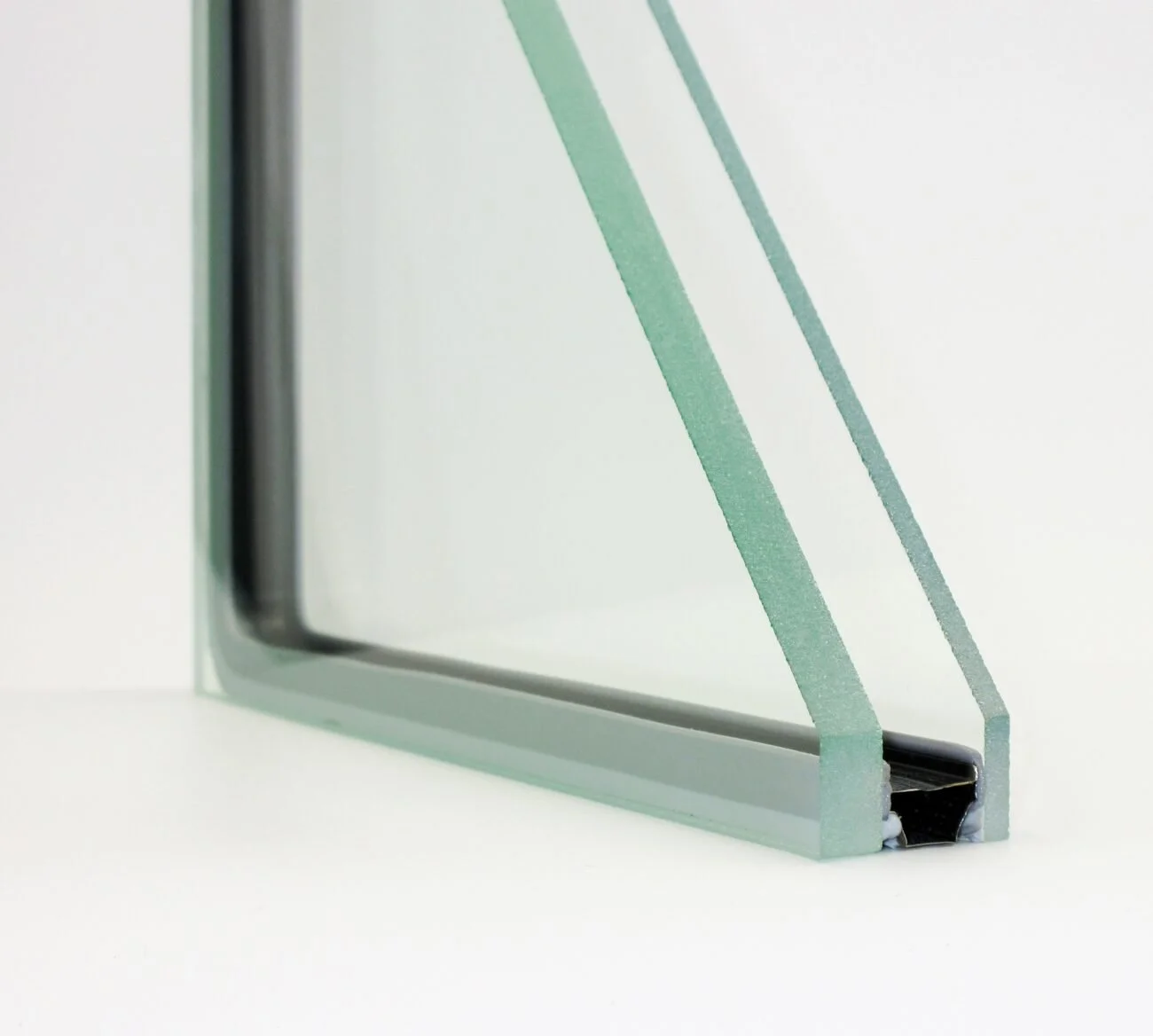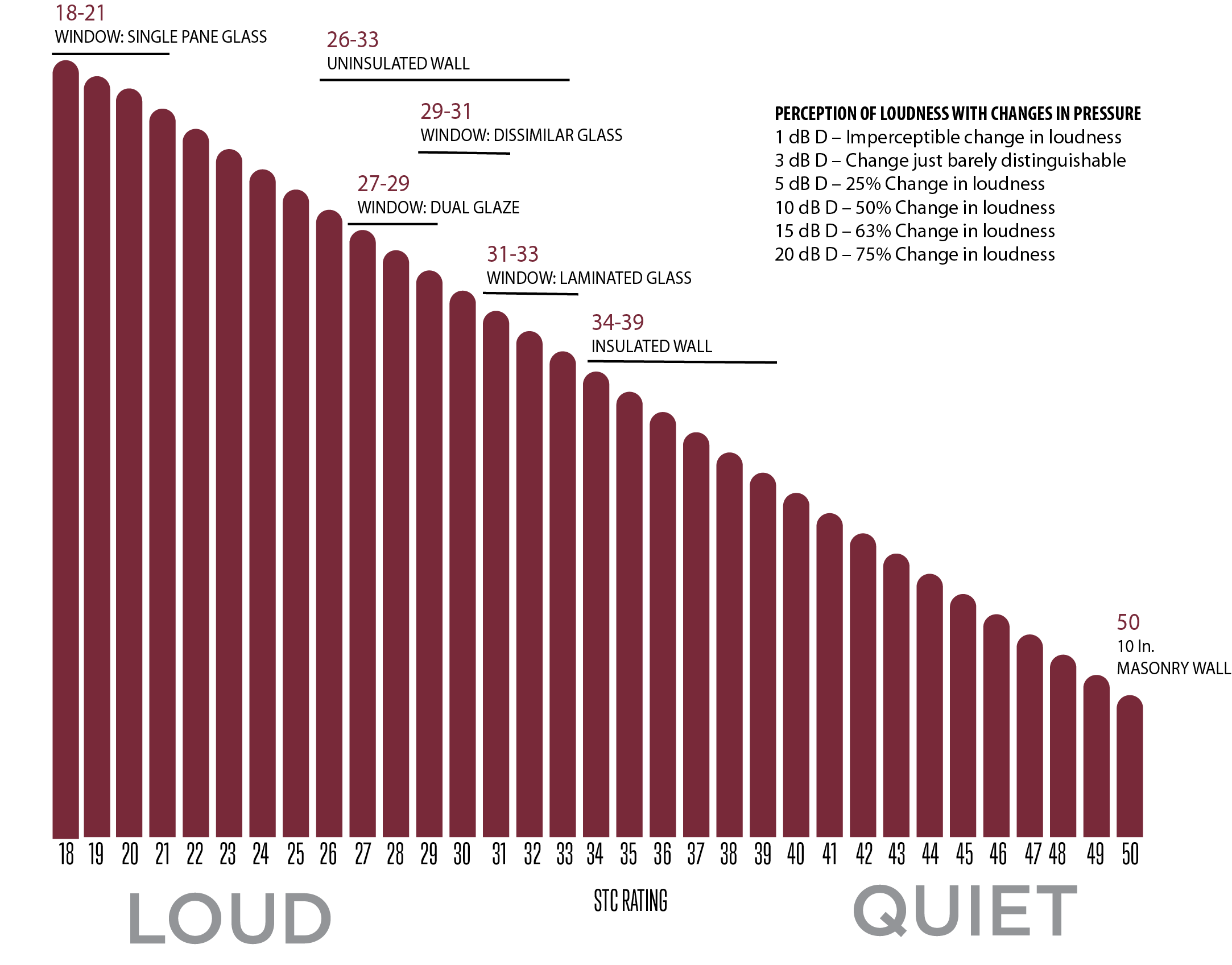
Sound Transmission Ratings
Reducing outdoor noise is a concern for many homeowners in the market for replacement windows. Noise pollution affects everyone to some degree. The STC rating, or Sound Transmission Class rating, is a way to know how well a window reduces sound through absorption or by reflecting sound waves. The higher the rating, the better the window controls the sound. For a typical single pane window you can expect a STC Rating of 18-20. Typical dual glazed windows can achieve better ratings of 25-27.
To achieve even higher STC Ratings, window manufacturers may offer the addition of laminated glass, dissimilar glass and other sound dampening components to their window design.
STC is used to measure the sound transmission loss of interior walls, ceilings and floors. The higher the rating, the less noise penetration.
So, How Do We Measure Sound?
The unit used to measure sound is the decibel (dB). The human ear can normally detect a change in sound volume as slight as 1 dB. Keep in mind that prolonged exposure to sound levels over 85 dB can cause serious damage to one’s hearing, and levels over 120 dB can even cause severe pain.
More about Decibels (dB)
Most common measure of pressure intensity or volume of sound waves
dBs are measured in Microbars – one millionth (1/1,000,000) of normal atmospheric pressure
Threshold of audibility = 0 dB
Change in dB level v. threshold of audibility is exponential
10dB = 10 x 0dB
20dB = 100 x 0dB
30dB = 1,000 x 0dB, Etc.
To understand what this means in real life, here are a few examples of decibel levels for a baseline comparison:
Whisper 15 dB
Normal Conversation 60 dB
Leaf Blower 80-85 dB
City Traffic, Inside the Car 80-85 dB
Nightclubs, Rock Concerts 105-110 dB
Train 110 dB
Pneumatic Riveter 125 dB
Jet Engine Afterburner 180 dB
KNOW WHAT SOUND LEVELS ARE SAFE
The U.S. Environmental Protection Agency (EPA) and the World Health Organization (WHO) recommend maintaining environmental noises below 70 dBA over 24-hours (75 dBA over 8-hours) to prevent noise-induced hearing loss. The EPA also specified limits for speech interference and annoyance at 55 dBA for outdoors activities and 45 dBA for indoor activities.
Benefits of Laminated Glass
Safety
Security
Sound Reduction
UV Control
Weather/Natural Disasters
Durability
Design Versatility
Benefits of Dissimilar Glass
Sound Reduction
Solar Energy Control
UV Control
Durability
Design Versatility
STC Comparison Chart
For reference purposes only. The chart provides a range of sound transmission loss ratings that can be achieved on most types of window systems. Some window styles such as fixed and casement windows will generally perform at the upper end of the range, since they usually have a lower amount of air leakage overall. The ratings listed above are not specific to any one type of frame material. These ratings may be lower if windows are not properly installed.












